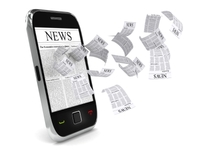Digital education is a rapidly-growing trend for public and private schools across the nation, as these mediums are quickly transforming how students learn.
Now, school libraries are beginning to catch on to the trend, getting rid of thousands of physical books and replacing them with digital copies, according to an article in the District Administration.
The District Administration cited Cushing Academy, a private secondary school in Massachusetts that recently gave away most of its 20,000 physical textbooks. The school upgraded by purchasing nearly 200 iRivers and Kindle e-readers. Cushing Academy also sold all of its 445 students a laptop, and began to upload electronic copies of textbooks straight to students’ laptops.
However, many teachers at Cushing Academy still use and assign printed textbooks in their classes.
Federal and state funding for digital improvements in the classrooms and libraries is slowly increasing. Most schools’ libraries, even if they are low-budget programs, have some computers or laptops for students to use and are beginning to purchase electronic readers.
Critics claim that this trend is not necessary, and it separates the wealthy schools from the low-income schools. They believe that Cushing and other private schools have significantly more funding than public schools. Therefore, they can upgrade their libraries with expensive digital textbooks; where as public schools – facing harsh budget cuts – could never be able to fund these textbooks.
However, others believe that this could save schools money in the long run because they only buy the rights to use books and never pay for printing materials and fees. But, the digital readers are still expensive.
Yet the appeal of digital textbooks is obvious. Students can easily and quickly access information through digital readers, instead of having to go to the library and find the book. This saves students time, time that most will spend reading. Also, digital textbooks are more relevant to students’ interests.
“Let’s face it,” said Doug Johnson, author of The Indispensable Librarian: Surviving (and Thriving) in School Media Centers. “The Net Generation wants its information and entertainment in digital formats. Ours may well be the last generation to use cellulose-based information-storage technology.”
If students are reading and learning more with digital textbooks, then implementing these digital readers is worth every penny invested in them, no matter how expensive they may be at first. Most experts believe that to be true and are pushing for more digital and electronic upgrades for students.
But funding is still down at most public schools, and the transformation to digital will be slow – at least until funding increases.

